
John Keats was an English poet of the second generation of Romantic poets, along with Lord Byron and Percy Bysshe Shelley. His poems had been in publication for less than four years when he died of tuberculosis at the age of 25. They were indifferently received in his lifetime, but his fame grew rapidly after his death. By the end of the century, he was placed in the canon of English literature, strongly influencing many writers of the Pre-Raphaelite Brotherhood; the Encyclopædia Britannica of 1888 called one ode "one of the final masterpieces".

John Nash was one of the foremost British architects of the Georgian and Regency eras, during which he was responsible for the design, in the neoclassical and picturesque styles, of many important areas of London. His designs were financed by the Prince Regent and by the era's most successful property developer, James Burton. Nash also collaborated extensively with Burton's son, Decimus Burton.

Lady Godiva, in Old English Godgifu, was a late Anglo-Saxon noblewoman who is relatively well documented as the wife of Leofric, Earl of Mercia, and a patron of various churches and monasteries.
This article contains information about the literary events and publications of 1845.

James Henry Leigh Hunt, best known as Leigh Hunt, was an English critic, essayist and poet.

John Julius Angerstein was a London businessman and Lloyd's underwriter, a patron of the fine arts and a collector. It was the prospect that his collection of paintings was about to be sold by his estate in 1824 that suddenly galvanised the King, George IV, and the prime minister, Lord Liverpool, into purchasing his collection for the nation and led to the founding of the British National Gallery in Angerstein's house at 100 Pall Mall.
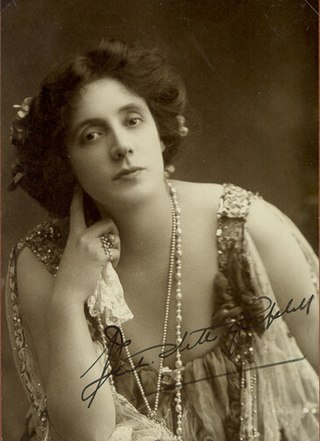
Beatrice Rose Stella Tanner, better known by her stage name Mrs Patrick Campbell or Mrs Pat, was an English stage actress, best known for appearing in plays by Shakespeare, Shaw and Barrie. She also toured the United States and appeared briefly in films.

ZaSu Pitts was an American actress who, in a career spanning nearly five decades, starred in many silent film dramas, such as Erich von Stroheim's 1924 epic Greed, and comedies, before transitioning successfully to mostly comedy roles with the advent of sound films. She also appeared on numerous radio shows and, later, made her mark on television. She was awarded a star on the Hollywood Walk of Fame in 1960 at 6554 Hollywood Blvd.
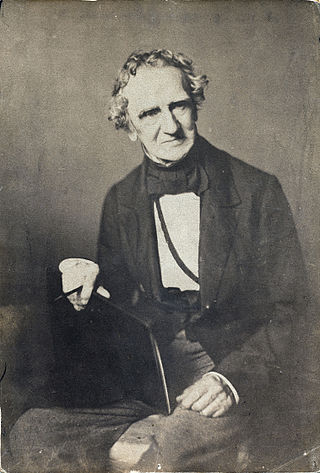
Thomas Sully was an English-American portrait painter. He was born in England, became a naturalized American citizen in 1809, and lived most of his life in Philadelphia, Pennsylvania, including in the Thomas Sully Residence. He studied painting in England under Benjamin West. He painted in the style of Thomas Lawrence and has been referred to as the "Sir Thomas Lawrence of America".
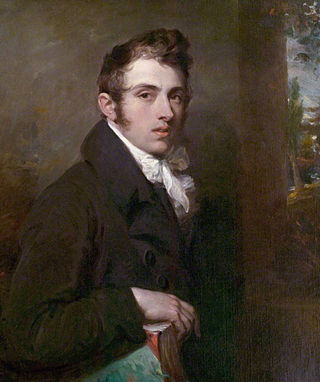
William Hilton was a British portrait and history painter. He is also known as "William Hilton the Younger".
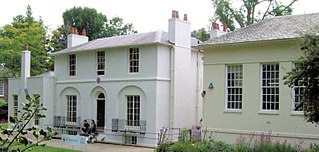
Keats House is a writer's house museum in what was once the home of the Romantic poet John Keats. It is in Keats Grove, Hampstead, in inner north London. Maps before about 1915 show the road with one of its earlier names, John Street; the road has also been known as Albion Grove. The building was originally a pair of semi-detached houses known as "Wentworth Place". John Keats lodged in one of them with his friend Charles Brown from December 1818 to May 1820, and then in the other half of the house with the Brawne family from August to September 1820. These were perhaps Keats's most productive years. According to Brown, "Ode to a Nightingale" was written under a plum tree in the garden.
The decade of the 1790s in archaeology involved some significant events.

Charles Armitage Brown was a close friend of the poet John Keats, as well as a friend of artist Joseph Severn, Leigh Hunt, Thomas Jefferson Hogg, Walter Savage Landor and Edward John Trelawny. He was the father of Charles (Carlino) Brown, a pioneer and politician of New Plymouth, New Zealand.

Percy Bysshe Shelley was an English writer who is considered one of the major English Romantic poets. A radical in his poetry as well as in his political and social views, Shelley did not achieve fame during his lifetime, but recognition of his achievements in poetry grew steadily following his death, and he became an important influence on subsequent generations of poets, including Robert Browning, Algernon Charles Swinburne, Thomas Hardy, and W. B. Yeats. American literary critic Harold Bloom describes him as "a superb craftsman, a lyric poet without rival, and surely one of the most advanced sceptical intellects ever to write a poem."

Charles Theodosius Heath was a British engraver, currency and stamp printer, book publisher and illustrator.
Alexander Pope was an Irish actor and painter.
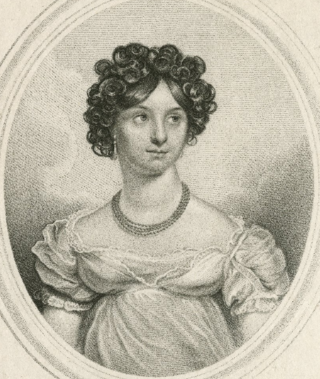
Elizabeth Yates was an English actress. She appeared on the stage under the names Miss Brunton, Elizabeth Brunton, Elizabeth Yates, Mrs. Yates, and Mrs. Yates late Miss Brunton.

Catherine Stephens, Countess of Essex was an English operatic singer and actress, once known as Kitty Stephens.

Jane Powell or Mrs Powell was a British actress. She was also known as Mrs Renaud and Mrs Farmer.

Ivy Cottage is a historic residence located in Exton, a census-designated place in West Whiteland Township, Chester County, Pennsylvania. Built in 1799 by politician and soldier Richard Thomas, the cottage started out as a plain stone farmhouse in the double-door Georgian style. It underwent extensive renovations and embellishments in the Queen Anne style in 1881 followed by an award-winning restoration in 2019. It was listed on the National Register of Historic Places on November 9, 2018.

















